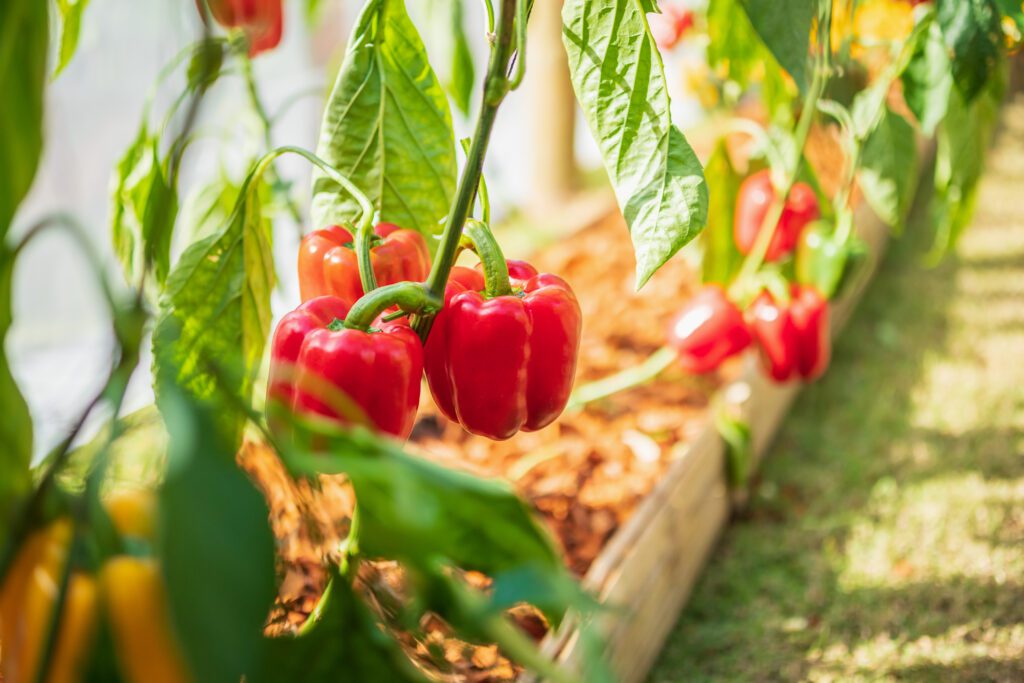by RYAN MILEJCZAK
Sponsored by Farm Credit of Central Florida
The bell pepper is a fresh, crisp, and delicious favorite across the nation. As Floridians, we’re especially lucky because they grow so well right here in our own state!
While they might not get the spotlight like other crops such as citrus and strawberries, bell peppers are actually one of Florida’s biggest crops. Though it’s uncertain when bell pepper production began in our state, Florida pepper production in general can be traced to the 1700s, when settlers in St. Augustine introduced the Datil pepper, a hot and flavorful pepper still popular today.
Bell peppers are cultivated here year round, but their peak season runs from October through June. Besides agricultural cultivation, bell peppers are also a popular, easy to grow member of gardens across the state. They thrive in the Florida climate, do best with full sun and well drained soil, and can be harvested in only 80 to 100 days.
For the 2023 growing season, Florida came second only to California in bell pepper production. Our state produced roughly 320 million pounds of bell peppers in 2023, representing a value of $188 million, making bell peppers a notable driver of the Florida economy.
While bell peppers saw a strong season, there was still a slight reduction from 2022’s impressive numbers, when Florida actually surpassed California in production. A number of factors contributed to this, but perhaps the largest contributor was an especially wet year from El Niño, and that moisture and the cold temperatures that came with it put a ding in bell pepper yields.
Palm Beach, Hendry, Collier, Manatee and Hillsborough counties produce the most bell peppers in the state because of soil and precipitation needs.
Something many people don’t realize is that all colors of bell peppers come from the same plant; the color depends on how ripe they are when harvested. Green peppers are picked before they are ripe. Yellow and orange peppers were left to ripen longer. If they are left to ripen even longer, the pepper turns red.
Bell peppers, like all peppers, belong to the genus Capsicum, a member of the nightshade family Solanaceae along with tomatoes, eggplant, and potatoes. They were first cultivated in Mesoamerica along with other varieties of peppers. While they’re a culinary vegetable, botanically, bell peppers (and all peppers) are a type of berry. The most common spicy chili peppers belong to a variety of species, with the most common being:
- C. Chinense, which includes scotch bonnet peppers and habaneros
- C. Frutescens, which includes Tabasco and piri piri peppers
- C. Annum, the most widely cultivated species which includes jalapeños and poblanos
Bell peppers belong to this last species, but are distinct from other varieties of C. Annuum both due to their unique shape and their complete lack of heat. The heat level of chili peppers is measured using Scoville heat units, or SHU. For example, a habanero ranks around 200,000 SHU, and a jalapeño around 3,000. Bell peppers, meanwhile, register 0 SHU.
This lack of heat helps make bell peppers a versatile favorite in kitchens around the world. They can be enjoyed fresh with a bit of hummus, stuffed and baked to make stuffed peppers, or thrown into a delicious stir fry, to name just a few options. Even better, they’re a nutritious addition to any meal.
Bell peppers are 94% water, meaning they’re a super low calorie snack that can also help you stay hydrated. Plus, they’re fat free and packed with vitamin C. They’re also a great source of vitamins A, B6, and E, as well as riboflavin and folate.
So, the next time you’re shopping at the grocery store, pick out some fresh Florida bell peppers to enjoy at your next meal. Better yet, plant your own to enjoy the freshest peppers right from your own backyard!

